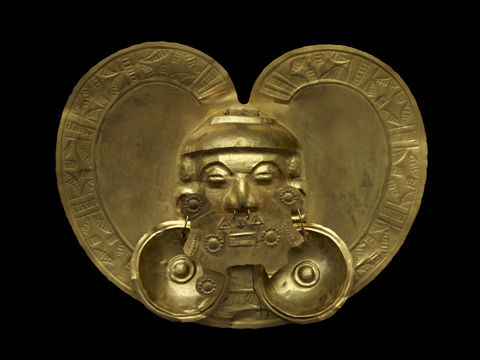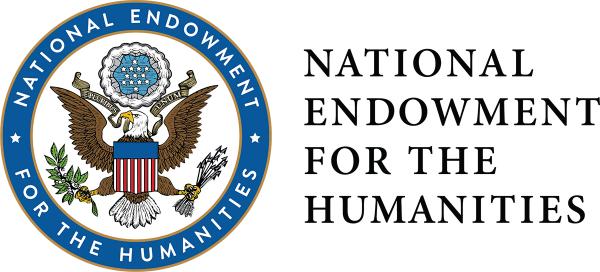The Museum of Fine Arts, Houston, Presents “Golden Worlds: The Portable Universe of Indigenous Colombia” in November

Calima, Colombia, Pectoral with Face, 200 BC–1300 AD, gold, the Museum of Fine Arts, Houston, gift of Alfred C. Glassell, Jr.
Calima, Colombia, Circular House Model, 200 BC–800 AD, gold, the Museum of Fine Arts, Houston, gift of Alfred C. Glassell, Jr.
400 works, from intricately cast gold pendants and hammered gold masks to ceramic effigies of fantastical creatures and rare ancient textiles, span all the major Pre-Columbian cultures of Colombia
HOUSTON—JULY 28, 2022—The Museum of Fine Arts, Houston, presents Golden Worlds: The Portable Universe of Indigenous Colombia, a groundbreaking exhibition showcasing the diversity and brilliance of ancient Colombian cultures. Comprising approximately 400 works, the exhibition reframes how we approach ancient Colombian art and invites visitors into a cultural dialogue that spans both space and time. With the European conquest, Indigenous cultures and knowledge, based on millennia of intellectual efforts, were largely cast aside. By drawing heavily on the involvement of contemporary Indigenous collaborators, Golden Worlds: The Portable Universe of Indigenous Colombia infuses these stunning works with life, meaning, and relevance for today and the future.
On view at the MFAH from November 6, 2022, through April 16, 2023, Golden Worlds has been organized by the Los Angeles County Museum of Art (LACMA), the Museum of Fine Arts, Houston, and the Museo del Oro of Banco de la República, Bogotá. The works in the exhibition—which encompass figurative ceramics, ceremonial and ritual items, feather works, textiles, metal works and historical documents—include an unprecedented number of loans from the Museo del Oro in Bogotá; pieces from LACMA’s permanent collection, many of which have never been exhibited; masterpieces from the Metropolitan Museum in New York; and a significant number of works from the collection of the MFAH.
“We are pleased to have co-organized this exhibition with our colleagues in Los Angeles and Bogotá, to look anew at these finely wrought gold objects and their timeless messages about the relationship between man and nature,” said Gary Tinterow, Director, the Margaret Alkek Williams Chair, the Museum of Fine Arts, Houston. “As the custodian of the Glassell Collection, the largest and most comprehensive collection of gold of the Indigenous Americas, we welcome the opportunity to share our gold of the Americas with our sister institutions.”
Exhibition Organization and Highlights
Golden Worlds: The Portable Universe of Indigenous Colombia is organized into thematic sections that center the voices and concepts of descendant Indigenous communities in the display and interpretation of the works.
The opening section, Splendor and Significance of Indigenous Colombian Gold, invites visitors to appreciate the stunning work in gold produced by these cultures over more than 1,000 years. Viewers will be greeted by the image of an Indigenous Colombian leader wearing the golden adornments of high office. Works include complex gold figures cast using the lost-wax technique, which received its highest expression in Indigenous Colombian cultures, as well as those created by sculpting and drawing on expertly rendered thin sheets of gold.
Our House, Our World, Our Cosmos anchors the tradition of fine gold adornments in the Indigenous view of the cosmos and humanity’s role in preserving that cosmos. The room presents the house as a metaphor for humanity’s place in the world, an image central to the exhibition’s wider theme of humans as the world’s caretakers. Large ceramic vessels conceived as houses for revered ancestors anchor this section, which also includes a stunning offering of precious materials contained in a ceramic house. Inside the house, thinking and storytelling are ways of creating and re-creating our world that were always important to Indigenous peoples and remain so today. Objects important to the act of thinking, deliberating, and storytelling will be seen throughout this room.
Rethinking History transitions to the arrival of Europeans in Colombia, which led to a loss of long-preserved knowledge and information. Historical documents on display are reinterpreted to consider how Colombian history was invented to meet Western expectations and values. Objects like colonial-era European gold coins displayed alongside ancient gold pieces also present fundamental contrasts between European and Indigenous notions of value.
People of Ancient Colombia introduces the many different ancient societies of the diverse territories that encompass present-day Colombia. Through representations of themselves in items such as masks, figurines, and effigies, visitors get a glimpse into the unique ways of subsistence, social organization, cosmology, and art developed by the people of ancient Colombia. This room also explores Indigenous concepts of “nature” and the role of humans within this network of life. A key artwork is a set of 14 contemporary paintings on paper (2020) of a single Caimo tree and its roles and relationships through the seasons by Confucio Hernández Makuritofe, a member of the Indigenous Kigipe Muina (people from the center) Nipode from the Colombian Amazon.
The final room, Gold for the Gods, is an intimate look at the small gold figures created by Indigenous artists for the gods. These small figures, called tunjos in the literature, were some of the most sophisticated cast objects produced in the Americas, yet they were immediately placed in the ground in offerings to the gods, never to be seen again by humans. These precious gold objects were not worn or traded, which leads the viewer to reflect on the complex and profound power of gold in Indigenous societies.
Golden Worlds: The Portable Universe of Indigenous Colombia
Gold of the Americas Galleries, Caroline Wiess Law Building
November 6, 2022–April 16, 2023
More information available at www.mfah.org/goldenworlds
Organization & Funding
This exhibition was organized by the Los Angeles County Museum of Art; the Museum of Fine Arts, Houston; and the Museo del Oro y Unidad de Artes y Otras Colecciones-Banco de la República, Colombia.
This exhibition has been made possible in part by the National Endowment for the Humanities: Democracy demands wisdom.

This project is supported in part by the National Endowment for the Arts.
Major support is provided by:
The Glassell Family Foundation
Generous support is provided by:
The Favrot Fund
The Houston exhibition is curated by Rex Koontz, Consulting Curator; and Chelsea Dacus, Assistant Curator, the Glassell Collections, African, Oceanic, and the Americas, and Assistant Curator, Antiquities.
Catalogue
The exhibition is accompanied by a fully illustrated catalogue, The Portable Universe: Thought and Splendor of Indigenous Colombia, co-published by LACMA and DelMonico Books/D.A.P. The book is arranged so as to envelop the works with life and meaning, and guide readers to different ways of understanding the world and our place in it. It includes insightful contributions by Indigenous Colombians, historians, ethnographers, archaeologists, and art historians.
About the Museum of Fine Arts, Houston
Spanning 14 acres in the heart of Houston’s Museum District, the main campus comprises the Audrey Jones Beck Building, the Caroline Wiess Law Building, the Lillie and Hugh Roy Cullen Sculpture Garden and the Nancy and Rich Kinder Building. Nearby, two house museums—Bayou Bend Collection and Gardens, and Rienzi—present collections of American and European decorative arts. The MFAH is also home to the Glassell School of Art, with its Core Residency Program and Junior and Studio schools; and the International Center for the Arts of the Americas (ICAA), a leading research institute for 20th-century Latin American and Latino art. www.mfah.org
Media Contact
Melanie Fahey, Senior Publicist
mfahey@mfah.org | 713.800.5345
